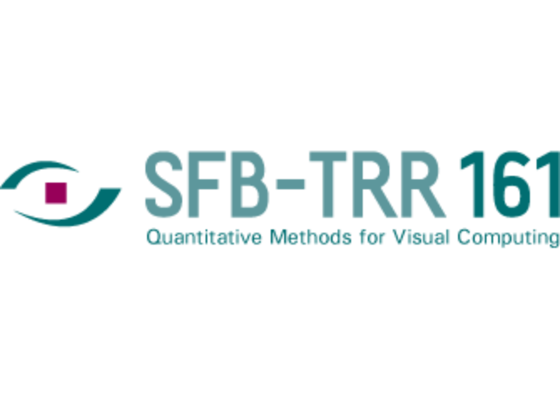
SFB-TRR 161 funding period 3 approved
We are excited to announce that the SFB-TRR 161 has been approved by the DFG for a third funding period! Our project A07 | Visual Attention Modeling for Optimization of Information Visualizations launched in September 2020 has so far published 6 conference and journal articles. Stay tuned for the next four years!
Despite the importance of human vision for perceiving and understanding information visualizations, dominant approaches to quantify users’ visual attention require special-purpose eye tracking equipment. However, such equipment is not always available, has to be calibrated to each user, and is limited to post-hoc optimization of information visualizations.
This project aims to integrate automatic quantification of spatio-temporal visual attention directly into the visualization design process without the need for any eye tracking equipment. To achieve these goals, the project takes inspiration from computational models of visual attention (saliency models) that mimic basic perceptual processing to reproduce attentive behavior. Originally introduced in computational neuroscience, saliency models have been tremendously successful in several research fields, particularly in computer vision. In contrast, few works have investigated the use of saliency models in information visualization. We will develop new methods for data-driven attention prediction for information visualizations as well as joint modeling of bottom-up and top-down visual attention, and use them to investigate attention-driven optimization and real-time adaptation of static and dynamic information visualizations.
-
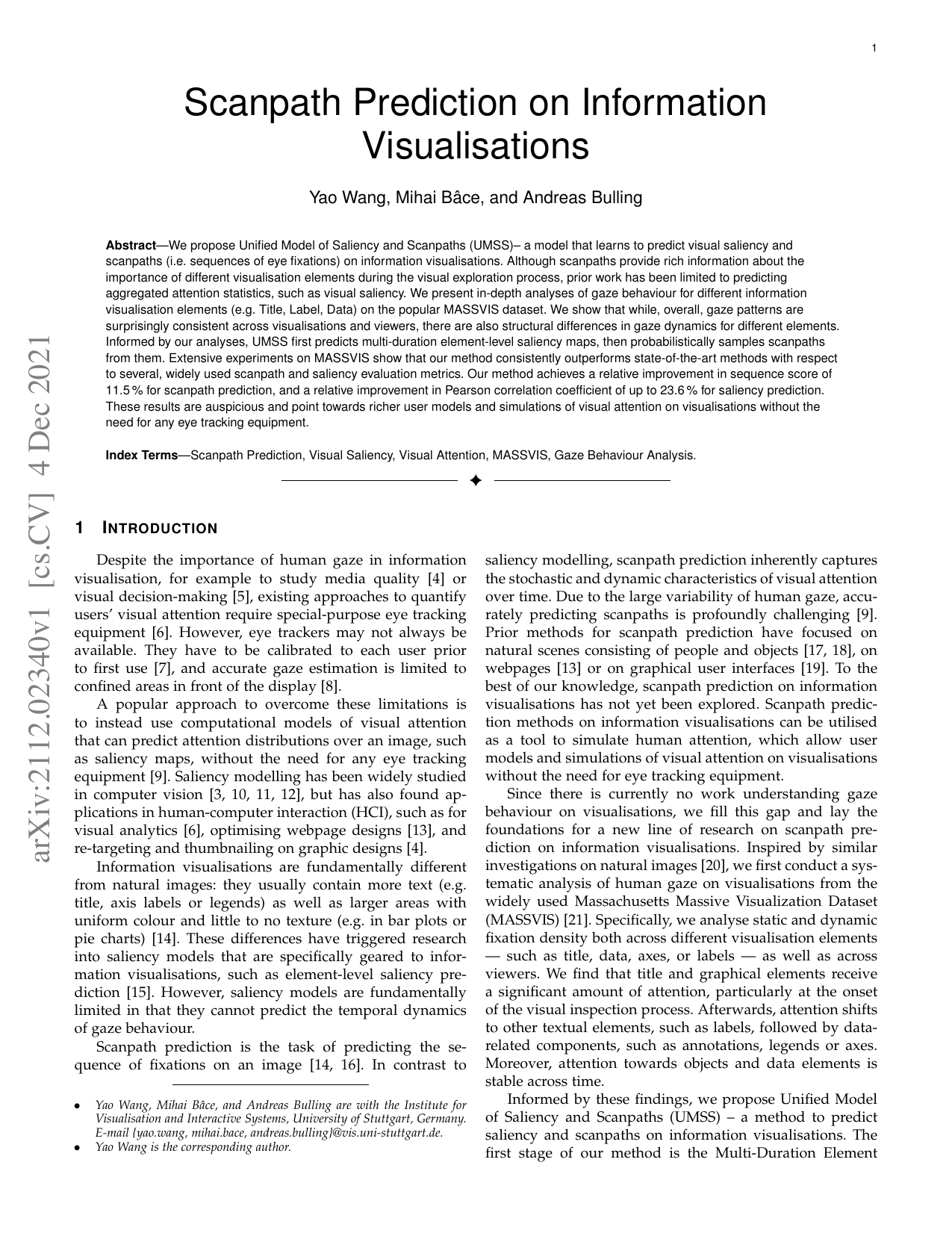
Scanpath Prediction on Information Visualisations
IEEE Transactions on Visualization and Computer Graphics (TVCG), (), pp. 1–15, 2023.
-
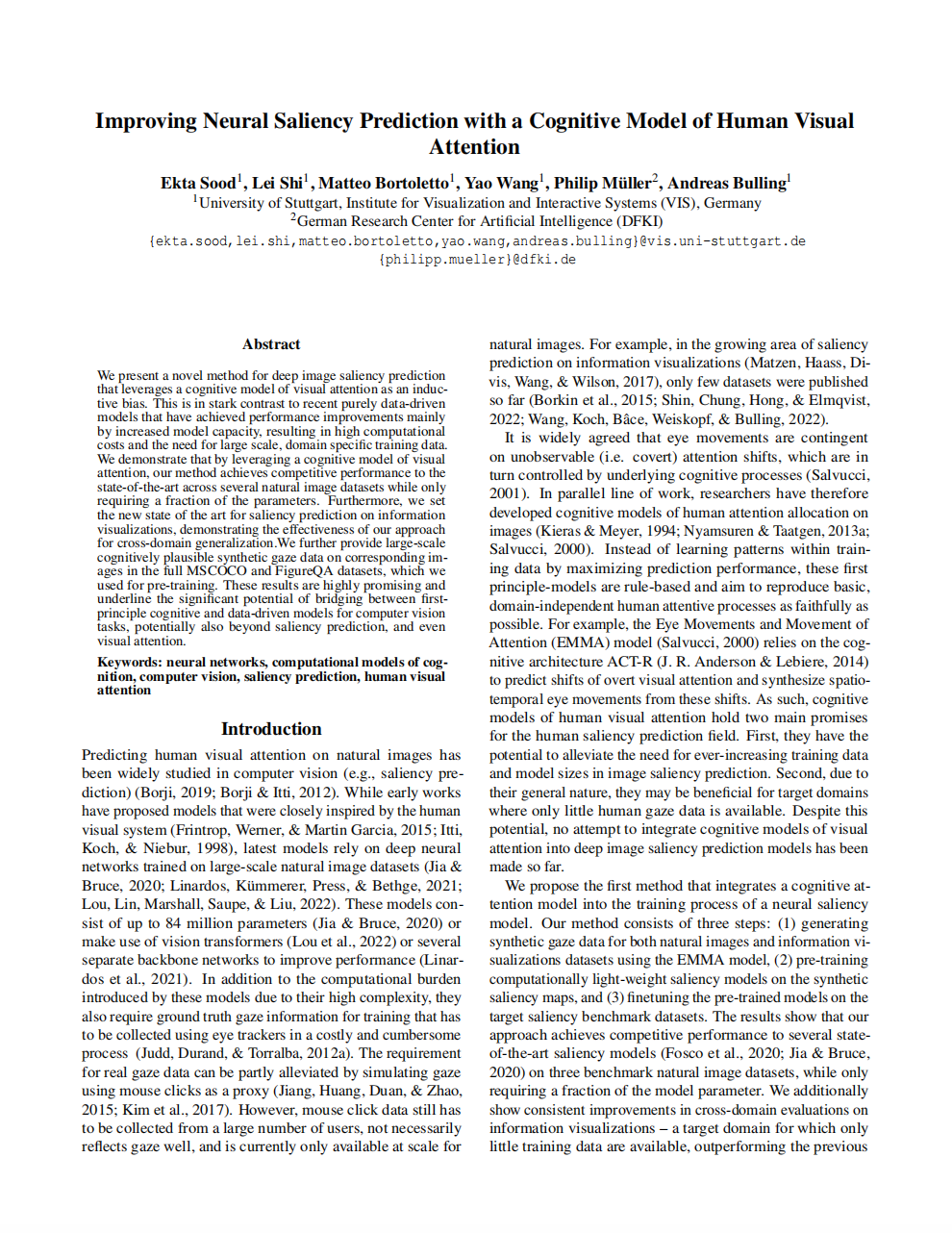
Improving Neural Saliency Prediction with a Cognitive Model of Human Visual Attention
Proc. the 45th Annual Meeting of the Cognitive Science Society (CogSci), pp. 3639–3646, 2023.
-
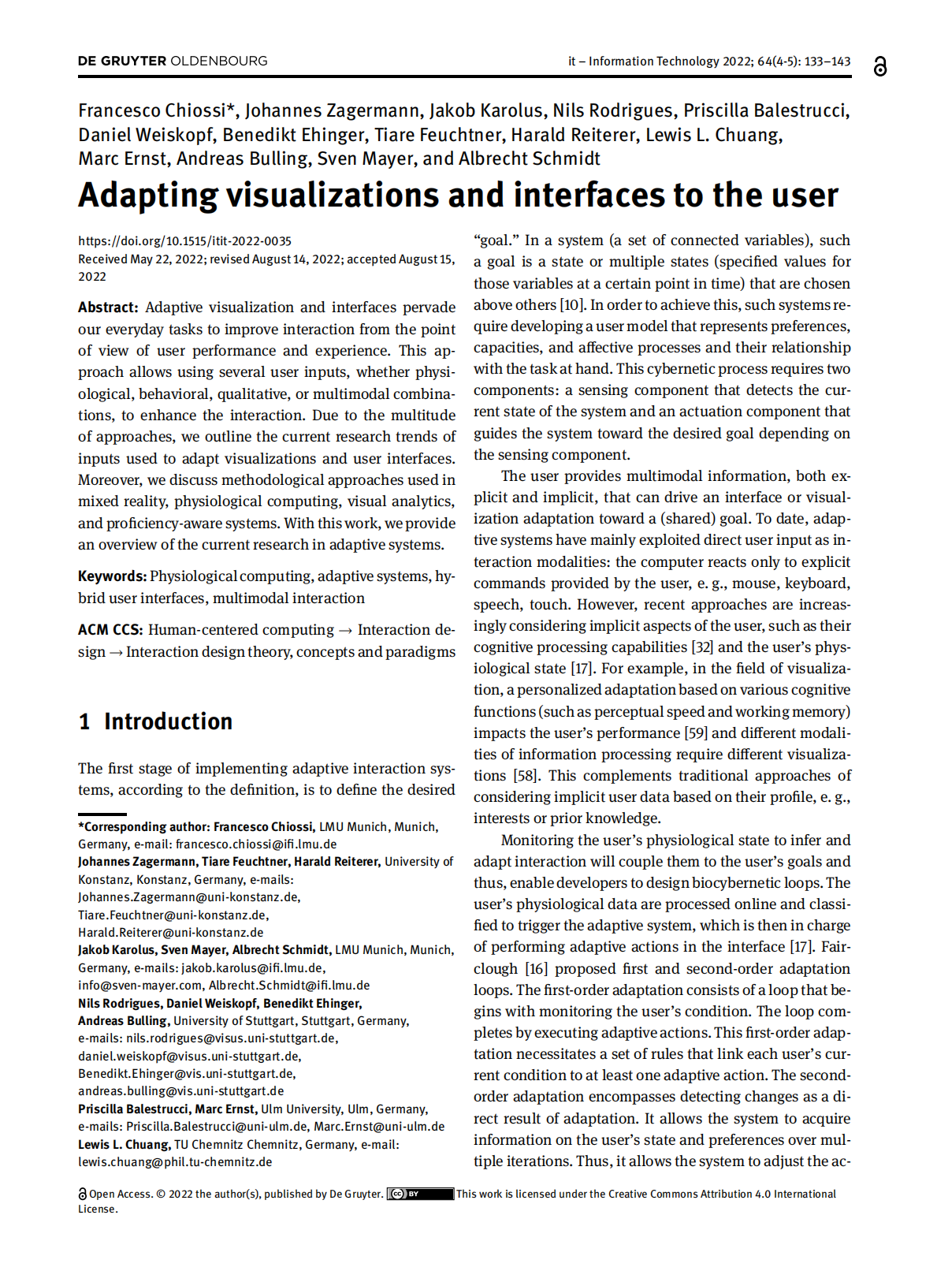
Adapting visualizations and interfaces to the user
it - Information Technology, 64(4-5), pp. 133–143, 2022.
-
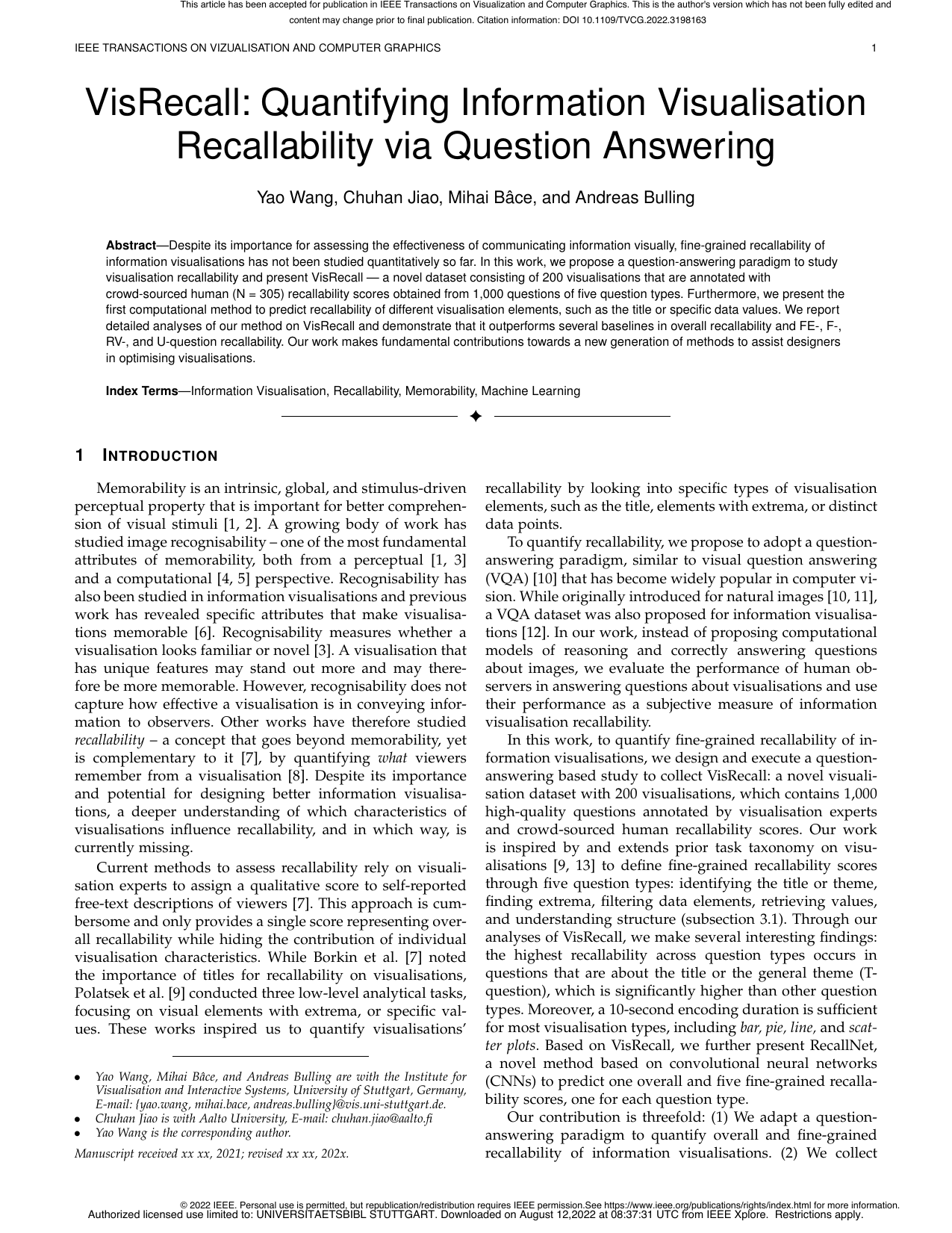
VisRecall: Quantifying Information Visualisation Recallability via Question Answering
IEEE Transactions on Visualization and Computer Graphics (TVCG), 28(12), pp. 4995-5005, 2022.
-
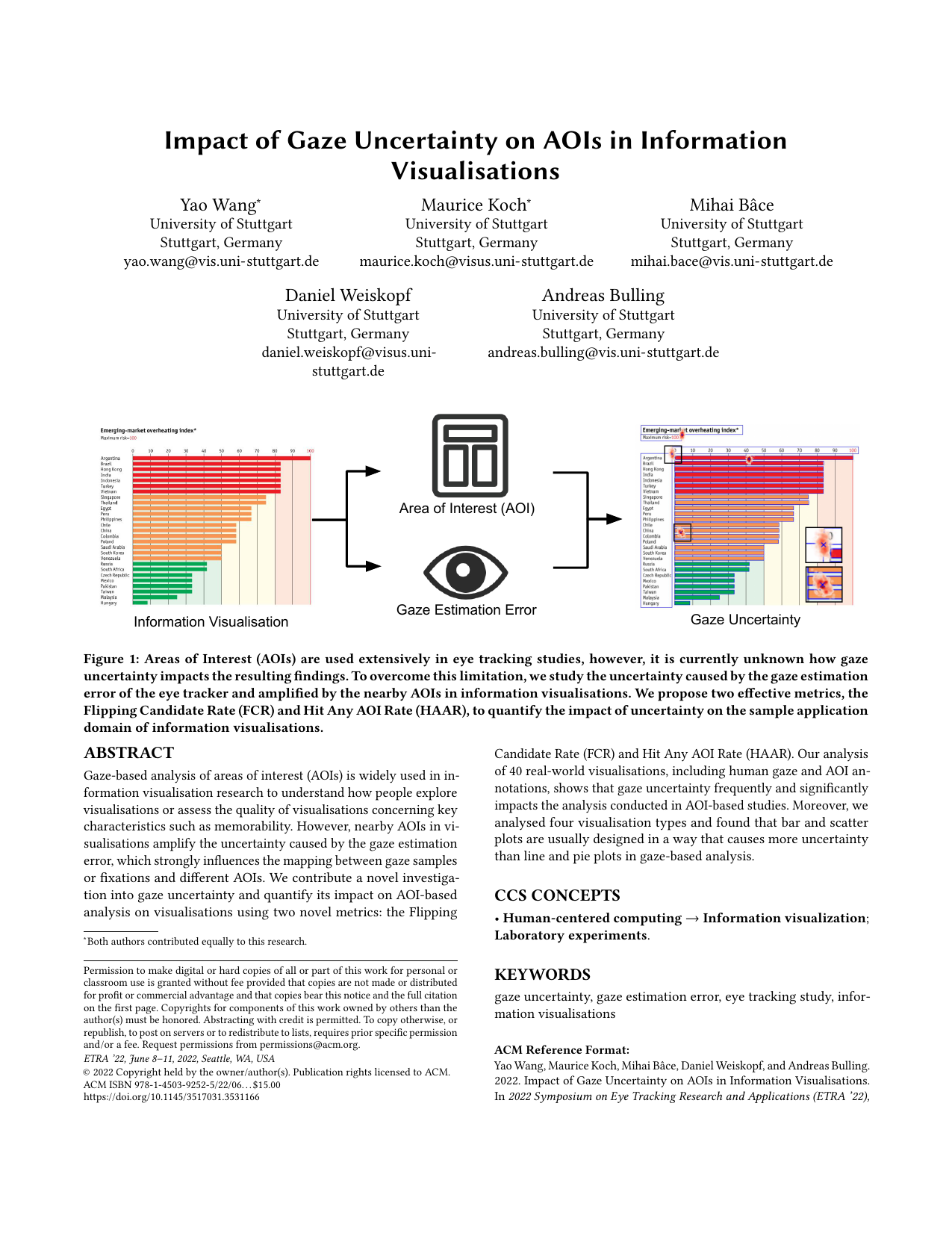
Impact of Gaze Uncertainty on AOIs in Information Visualisations
ETRA Workshop on Eye Tracking and Visualization (ETVIS), pp. 1–6, 2022.
-
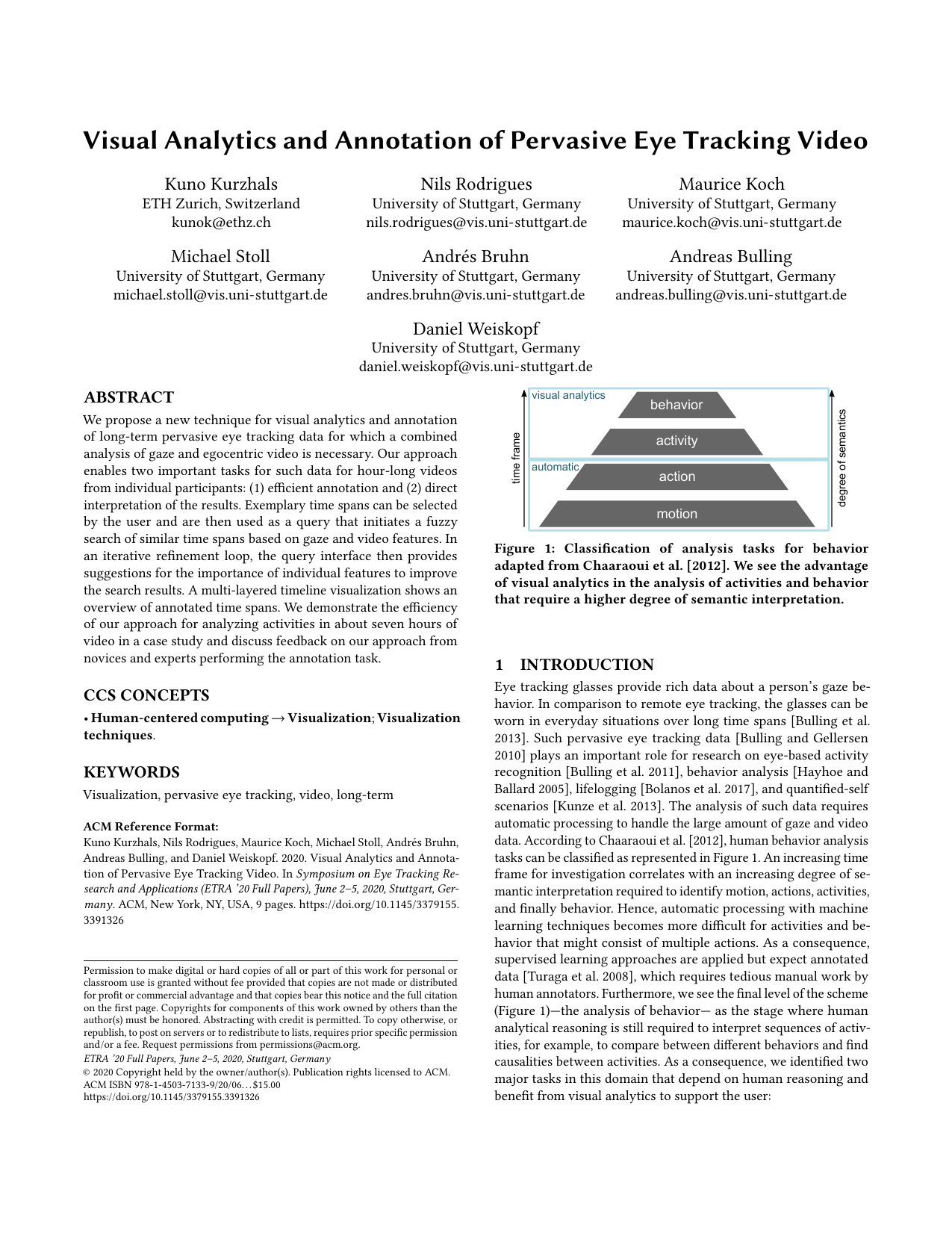
Visual Analytics and Annotation of Pervasive Eye Tracking Video
Proc. ACM International Symposium on Eye Tracking Research and Applications (ETRA), pp. 1-9, 2020.
Here are some related news you might like to read next:
- Andreas Bulling joins the IMPRS-IS executive board
- SNSF Fellowship for Mihai Bace
- First visit by Hans Gellersen
- Eyes4ICU proposal accepted
- Hans Gellersen to collaborate with our group through the Humboldt Research Award

